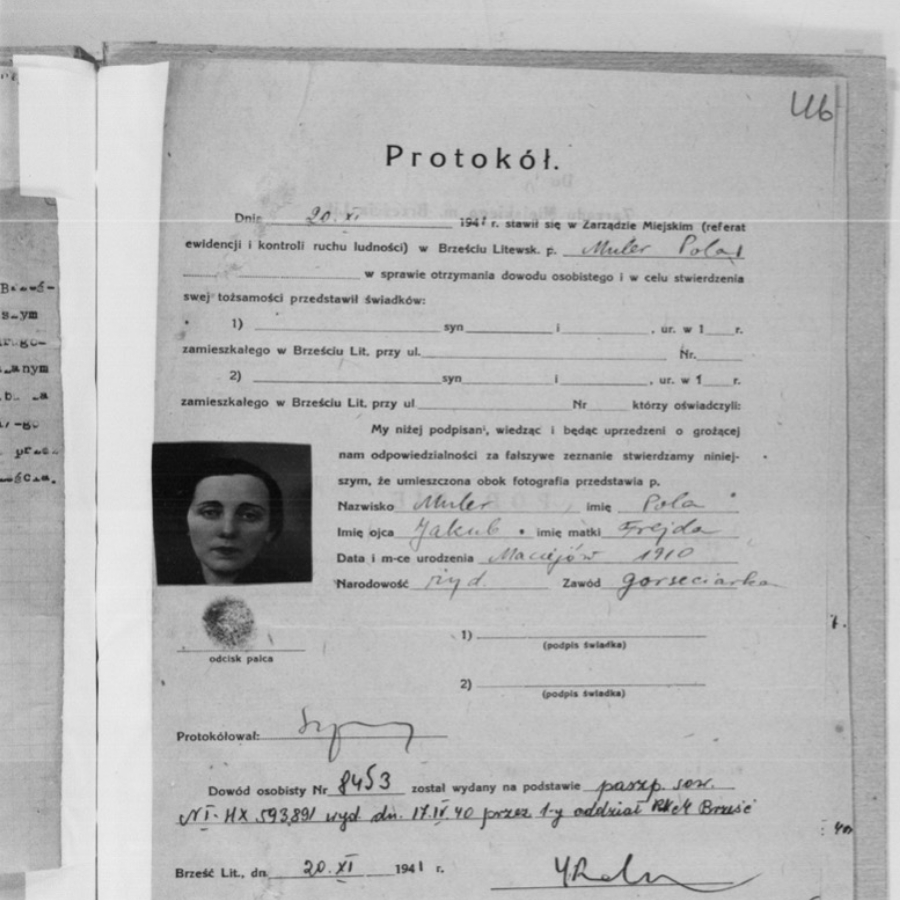The Brest-Litovsk ghetto
Boris Czerny, ERLIS
Belarusian-Jewish Cultural Heritage Center
Yad Vashem
Mémorial de Caen

Title
The main archival sources for this research program are the 16,000 information sheets produced by the German authorities in 1941, which every Jew, man or woman over the age of 14 had to complete giving them the right to a passport and a ration card. Rich in information, at the individual level: first name, last name, age, profession, address, registration number, children, etc., they will gradually be compared with other archival documents.
To test the different scientific hypotheses, engineers from the Digital Document division have set up online exploration and distribution tools. Thanks to encoding of the information delivered by the recording protocols according to an XML TEI schema, an XML database was first created using BaseX. When the data was not finely annotated enough in the original tabular document, it was resequenced using XSL-T. We have, for example, specified in the encoding the first and last name of each resident, the place and their date of birth in order to achieve finer granularity. The structuring of the data allows, in addition to the detailed display of the data, to search this database according to criteria established by Boris Czerny and his team (crossing the profession and the sex of the person, crossing the profession and the address or even sex and marital status, etc.). In addition to these queries formulated in As part of a spatial study, address data is used to determine the distribution of the Jewish population at the time of registration.
In addition to the protocols we have a large number of passes. They generally contain the addresses of companies and workshops that employ Jewish labor. All of these addresses were placed on a map also drawing the spaces, the places where Jews had to (or could) go to work.

The project will ultimately have studies and presentation texts written by colleagues specializing in the Shoah in Eastern Europe to take advantage of this archival material. These studies will provide general information on the functioning of the ghetto during the German occupation (writing of texts on access to care, work, etc.), particularly for a wide audience.
The projection on the reconstructed map of the ghetto of the address of each prisoner mentioned on the registration protocols should finally provide the scientific team of the project with important socio-demographic and socio-economic elements to visualize the density of the population by street (thanks to the addresses on the protocols), to trace the movements of the population and to circumscribe the very limits of the ghetto.
One of the other scientific objectives aimed at is also to better represent the porosity of the ghetto, that is to say to measure the socio-spatial interactions of the Jews of the ghetto with the surrounding population. The use of geographical instruments in a digital context will make it possible to answer a certain number of questions about the spatiality of the Brest-Litovsk ghetto.
